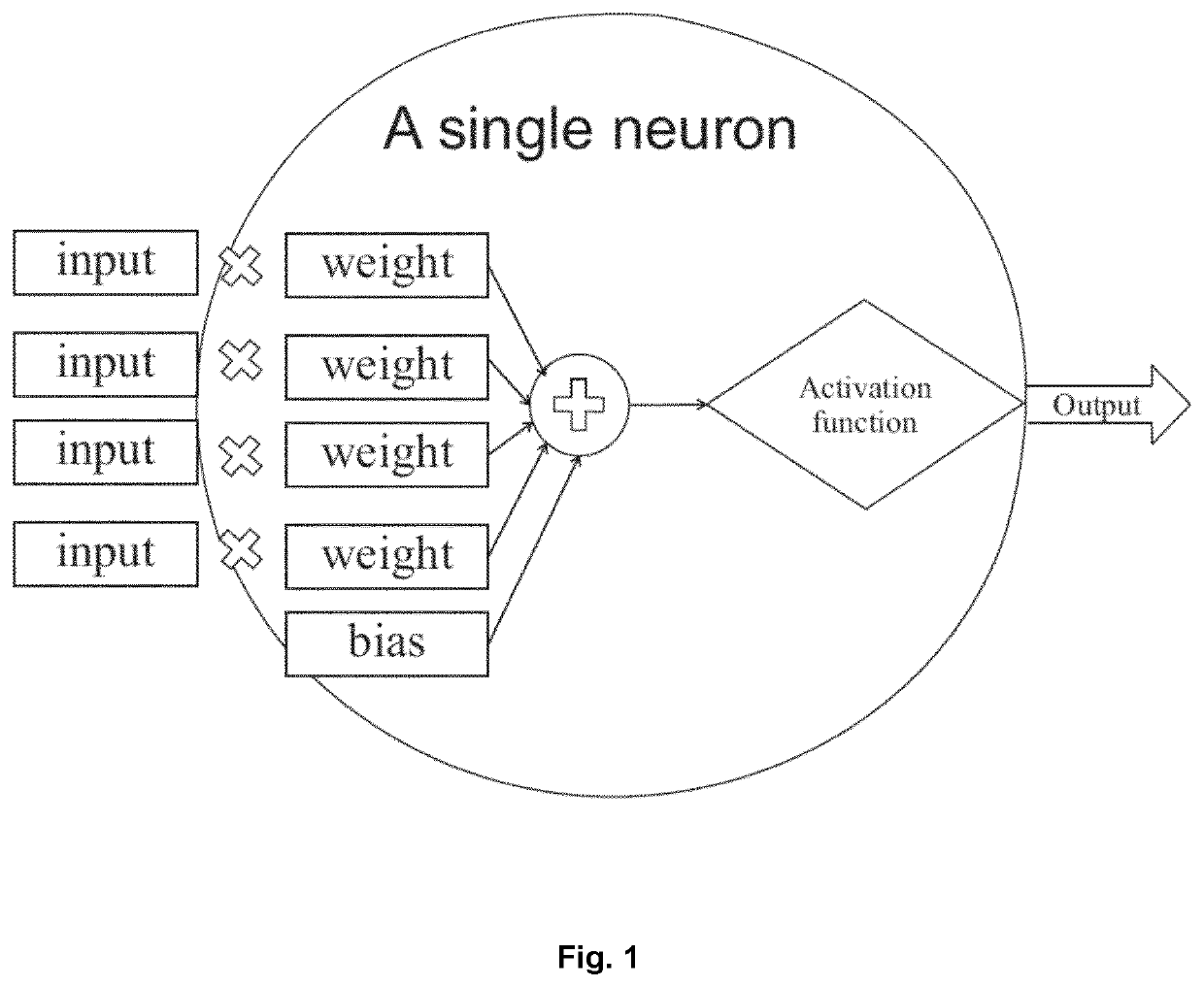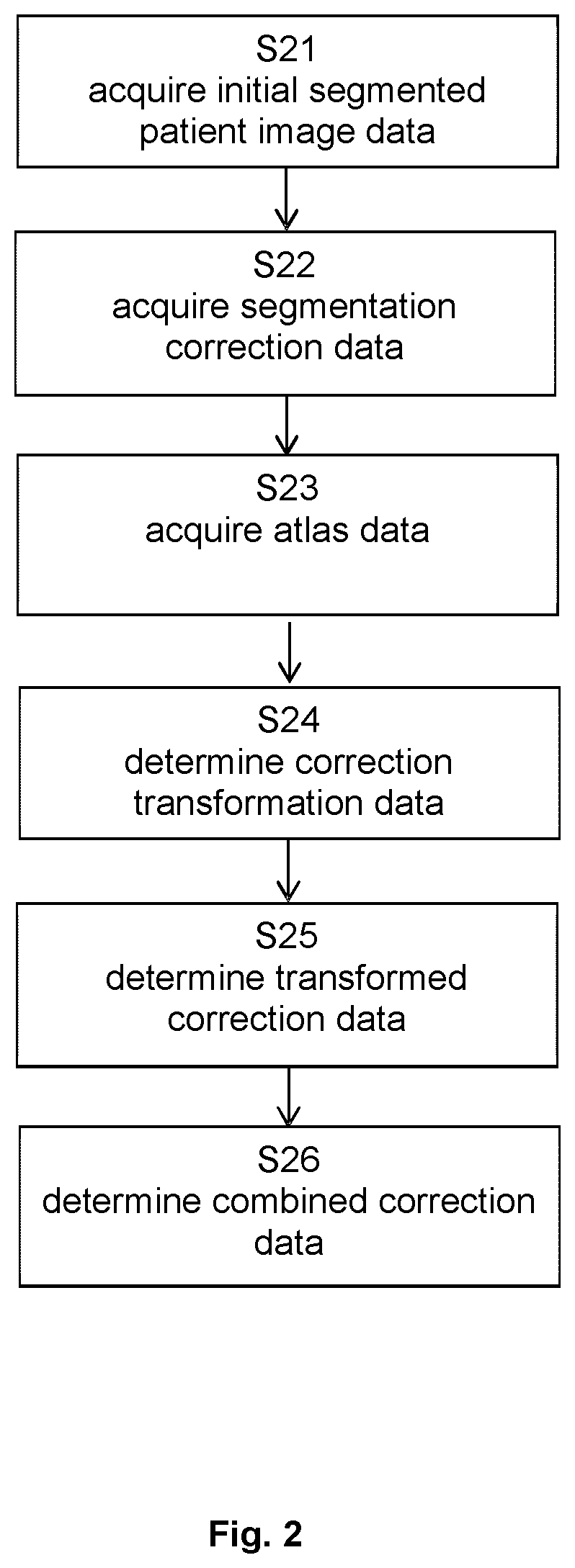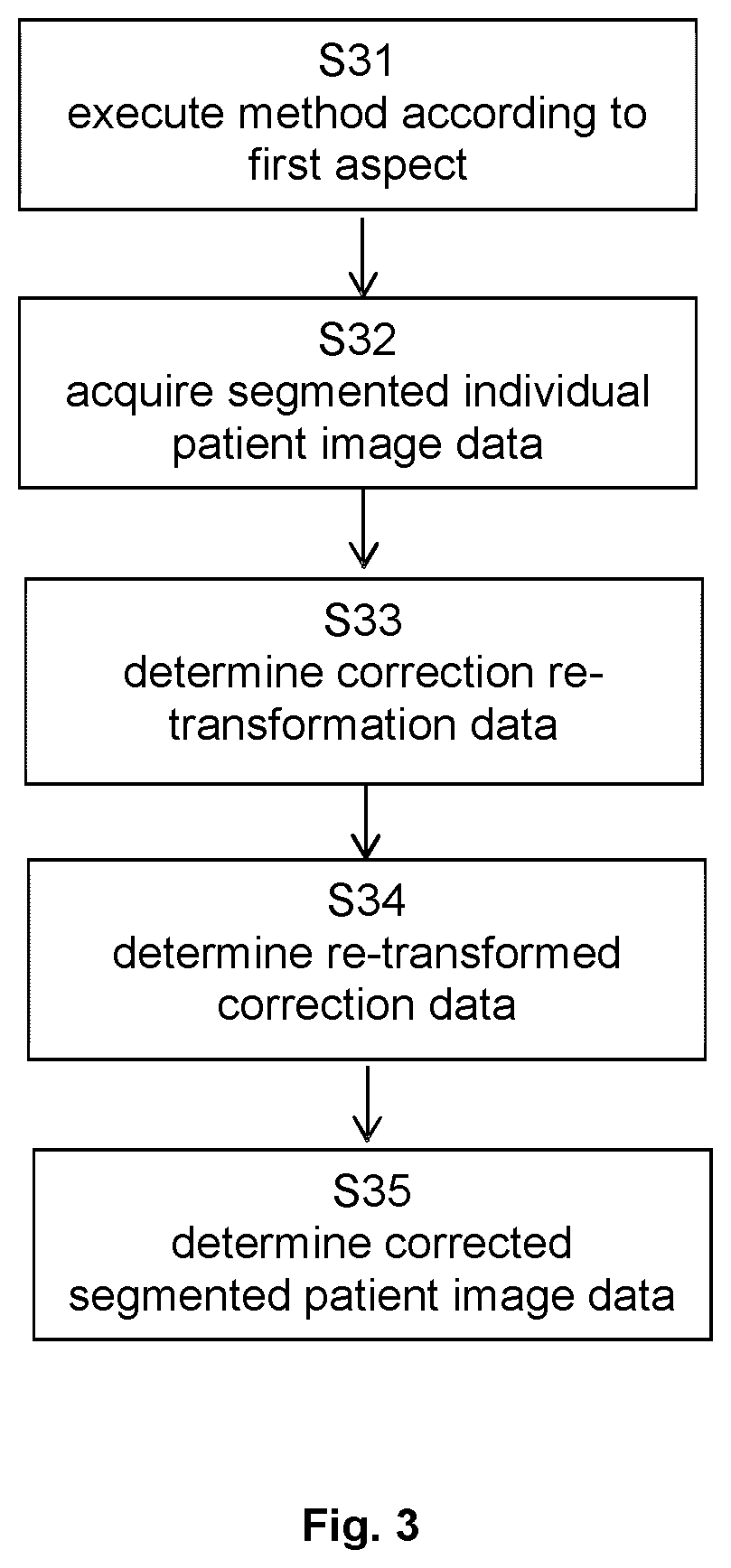Correcting segmentation of medical images using a statistical analysis of historic corrections
- Summary
- Abstract
- Description
- Claims
- Application Information
AI Technical Summary
Benefits of technology
Problems solved by technology
Method used
Image
Examples
Embodiment Construction
[0134]FIG. 1 illustrates the structure of a neuron as part of a (convolutional) neural network, in which input is assigned certain weights for processing by an activation function which generates the output of the neuron.
[0135]FIG. 2 describes the basic flow of the method according to the first aspect, which starts in step S21 with acquiring the initial segmented patient image data, continues to step S22 which encompasses acquisition of the segmentation correction data, and then proceeds to acquiring the atlas data in step S23. On that basis, step S24 calculates the correction transformation data, which is followed by determination of the transformed correction data in step S25. Finally, the combined correction data is determined in step S26.
[0136]FIG. 3 illustrates the basic steps of the method according to the second aspect, in which step S31 encompasses execution of the method according to the first aspect and step S32 relates to acquisition of the segmented individual patient im...
PUM
 Login to View More
Login to View More Abstract
Description
Claims
Application Information
 Login to View More
Login to View More - R&D
- Intellectual Property
- Life Sciences
- Materials
- Tech Scout
- Unparalleled Data Quality
- Higher Quality Content
- 60% Fewer Hallucinations
Browse by: Latest US Patents, China's latest patents, Technical Efficacy Thesaurus, Application Domain, Technology Topic, Popular Technical Reports.
© 2025 PatSnap. All rights reserved.Legal|Privacy policy|Modern Slavery Act Transparency Statement|Sitemap|About US| Contact US: help@patsnap.com



